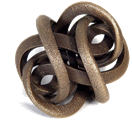Binny's Jig: Difference between revisions
Appearance
No edit summary |
mNo edit summary |
||
| Line 15: | Line 15: | ||
|f_theme_code_index=3313 337L7L | |f_theme_code_index=3313 337L7L | ||
}} | }} | ||
< | <pre> | ||
T:Binny's Jigg | T:Binny's Jigg | ||
| Line 22: | Line 22: | ||
S:Blaikie Ms. | S:Blaikie Ms. | ||
K:C | K:C | ||
{F}EFG {C}E{E}DC|[G,C]DD E{E}DC|{F}EFG E{E}DC| | {F}EFG {C}E{E}DC|[G,C]DD E{E}DC|{F}EFG E{E}DC|A,CC B,A,G,:| | ||
A,CC B,A,G,::E2F G2G|c2 {c}B A_Bc|CCE {E}D2C| | |:E2F G2G|c2 {c}B A_Bc|CCE {E}D2C|E2F G2G| | ||
E2F G2G|c2 {c}B A_Bc|CCE {E}D2C|E2F G2G| | c2 {c}B A_Bc|CCE {E}D2C|E2F G2G|c2{c}B A_Bc| | ||
c2{c}B A_Bc|CCE {E}D2C|E2F GA-B|c2 {c}B A_Bc|CCE {E}D2C:|| | CCE {E}D2C|E2F GA-B|c2 {c}B A_Bc|CCE {E}D2C:|| | ||
</ | </pre> | ||
<br> | <br> | ||
<br> | <br> | ||
<br> | <br> | ||
<p> | <p> | ||
Revision as of 21:53, 10 December 2016
BINNY'S JIG(G). AKA and see "Dusty Miller [6]," "Hey the Dusty Miller." Scottish, Jig. C Major. Standard tuning (fiddle). AABB. From the Blaikie Manuscript (usually dated 1692), and from the time before the rise in popularity of the reel and strathspey, when "the English thought of the jig as being the most representative type of Scottish music" (Alburger, 1983). Andrew Blaikie was an engraver from Paisley who had a manuscript of tablature for the viol de gamba. "Binny's Jig" resembles "Dusty Miller" only in the first strain. The English collector Chappell sometimes referred to the tune as "Benny's Jig."
Printed source: Alburger (Scottish Fiddlers and Their Music), 1983; Ex. 6c, p. 22.
__NORICHEDITOR__

